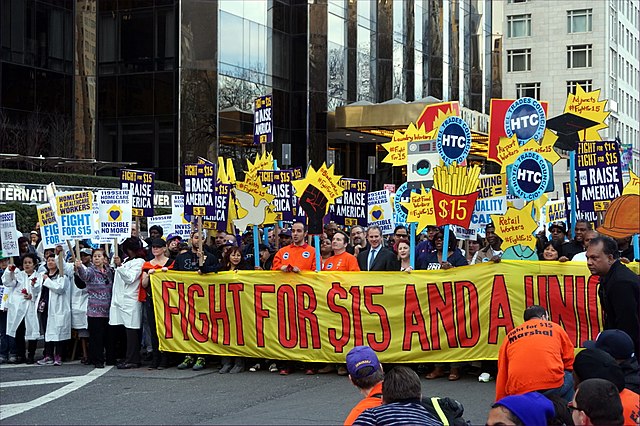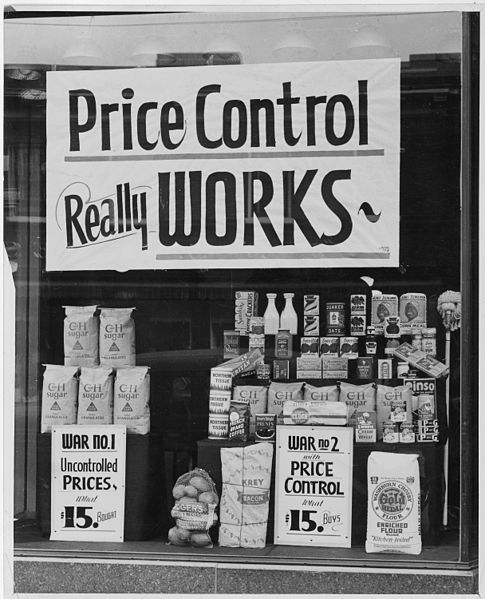A price floor is a government- or group-imposed price control or limit on how low a price can be charged for a product, good, commodity, or service. It is one type of price support; other types include supply regulation and guarantee government purchase price. A price floor must be higher than the equilibrium price in order to be effective. The equilibrium price, commonly called the "market price", is the price where economic forces such as supply and demand are balanced and in the absence of external influences the (equilibrium) values of economic variables will not change, often described as the point at which quantity demanded and quantity supplied are equal. Governments use price floors to keep certain prices from going too low.
Protesters call for an increased legal minimum wage as part of the "Fight for $15" effort to require a $15 per hour minimum wage in 2015. A government-set minimum wage is a price floor on the price of labour.
A Boeing 707 at JFK airport in 1970. During the mid-1960s, airfares had a regulated price floor that made flying twice the cost of the 2010s, due to the ending of price controls in 1978.
Price controls are restrictions set in place and enforced by governments, on the prices that can be charged for goods and services in a market. The intent behind implementing such controls can stem from the desire to maintain affordability of goods even during shortages, and to slow inflation, or, alternatively, to ensure a minimum income for providers of certain goods or to try to achieve a living wage. There are two primary forms of price control: a price ceiling, the maximum price that can be charged; and a price floor, the minimum price that can be charged. A well-known example of a price ceiling is rent control, which limits the increases that a landlord is permitted by government to charge for rent. A widely used price floor is minimum wage. Historically, price controls have often been imposed as part of a larger incomes policy package also employing wage controls and other regulatory elements.
The maximum retail price (MRP) of this bottle of water in Sri Lanka is 90 Rupees
A World War II-era shop display promoting price controls.
Protesters call for an increased legal minimum wage as part of the "Fight for $15" effort to require a $15 per hour minimum wage in 2015. A government-set minimum wage is a price floor on the price of labour.
World War II poster about US price controls





